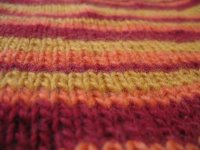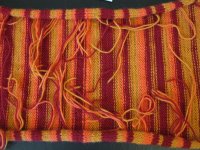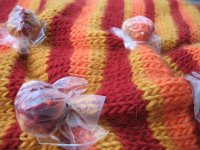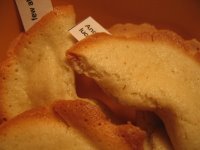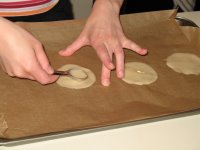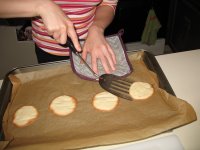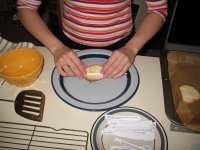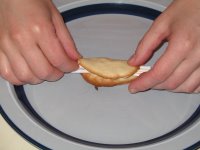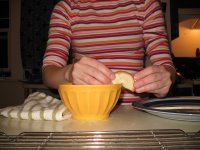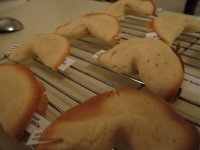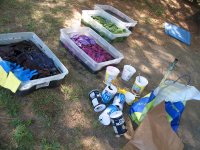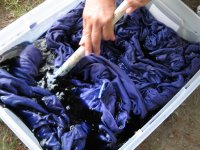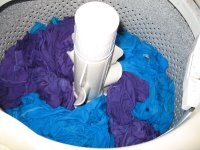Crafts: Laptop Cozy...The Big Day
 [Catch up on the drama of Parts I and II of this Laptop Cozy series HERE--Part I and HERE--Part II.]
[Catch up on the drama of Parts I and II of this Laptop Cozy series HERE--Part I and HERE--Part II.]
It's been a long, hard road, my friends. The cozy is complete. Ends are all woven in. Garbanzo beans are all tucked into little pouches and lovingly wrapped in cut-up zip lock bags. It's been through the washer and the ringer to boot. Results are in...
But FIRST, for a bit of delayed gratification, a little lesson on felting! True, honest-to-goodness felting is a bit different than the kind of felting I'm talking about. Felting, like Fedora hat felting, is very similar to making hand-made paper. Basically, it is done by taking carded, unspun wool (also called roving), getting it wet, and placing it in layers into some sort of mold. As the wet wool is agitated, the little fibers will tangle with each other, creating a solid, tight mass. Let it dry and you have a solid piece of fabric that can be molded into something like a hat or used in kindergarden dioramas of cave-man dwellings.
When we talk about felting with knitting, it's essentially the same process, but using spun and knitted fiber. Instead of going at it free form, we knit a very big, loose item, get it wet, and agitate it to get the fibers to tangle together. The piece will 'shrink' and become a thicker, more solid piece of fabric--exactly what happens when you accidentally throw your favorite winter sweater in the wash. (Interestingly enough, it's the washing process, NOT the drying process that causes your favorite sweater to felt and shrink.) Yarns made of any kind of animal fibers (like wool) and that have not been pre-treated to be machine washable ("superwash") can be felted. Yarns made of plant fibers like cotton, flax, or bamboo don't felt very well, though I've heard of felting experiments combining a thread of plant fiber and a thread of animal fiber. If you're planning a felting project, it's really really key to knit and felt a sample swatch. Every yarn felts a little differently and swatching is crucial to determine the gauge for your original, pre-felted piece. In general, a piece of knitting will felt (shrink) more vertically (top to bottom) than horizontally (left to right).
To felt an item, first knit something rilly rilly big on relatively large needles. The looser you knit, the more the piece will felt because there will be more room to agitate those fibers. If the knitting is tight, there will be less agitation and less felting. Put the finished piece in a zippered bag (like a pillow case)--this will prevent your washing machine from getting clogged with little rats of loose fiber. Throw this in your washing machine along with a couple of pairs of old jeans (NOT TOWELS) and about a tablespoon of detergent (any kind). Put your washing machine on the lowest load setting and the hottest water setting. Let 'er rip! Check your piece every five minutes to see how the felting is coming along. You can keep repeating the first part of the wash cycle as many times as you need to. When it's the size you want, take it out of the washing machine, let the washing machine run until the cold water part of the cycle, and dunk your piece back in to get out the last traces of detergent. Many places advocate removing your piece before the spin cycle as sometimes spinning it can leave wrinkles in the fiber, but I've never had this problem. In general, I feel the risk is worth it to get out as much excess water as possible. All that's left to do is block your piece and let it dry. There's a good article about felting on Knitty.com: http://knitty.com/ISSUEwinter03/FEATfelthis.html.
Ok, blah blah blah, give us the good stuff! My friends, wait no longer. (P.S. Click on any of the pictures to see them larger--some of the detail is amazing, but hard to see in the smaller size.) This is the finished, pre-felted laptop cozy. My idea was to have a fewer number of large nubs at the bottom and gradually move to more, smaller nubs at the top. The large nubs have about ten garbanzo beans stuffed in them and the smallest nubs have three. I ended up using cut squares of old zip lock bags instead of simple plastic wrap because I was worried the plastic wrap might actually melt in the hot water and figured the zip lock bags would be more durable. I used cheapo rubber hair bands to secure the nubs. Pre-felted size was about 18.5x22 inches.
This is the finished, pre-felted laptop cozy. My idea was to have a fewer number of large nubs at the bottom and gradually move to more, smaller nubs at the top. The large nubs have about ten garbanzo beans stuffed in them and the smallest nubs have three. I ended up using cut squares of old zip lock bags instead of simple plastic wrap because I was worried the plastic wrap might actually melt in the hot water and figured the zip lock bags would be more durable. I used cheapo rubber hair bands to secure the nubs. Pre-felted size was about 18.5x22 inches.
 And it felted beautifully. The fabric is really seamless and tight with barely a trace of the original stitches. You can already see in the pictures above that the fabric in the nubs didn't felt at all. Boy was I nervous to take them off, though!
And it felted beautifully. The fabric is really seamless and tight with barely a trace of the original stitches. You can already see in the pictures above that the fabric in the nubs didn't felt at all. Boy was I nervous to take them off, though!
And, ta-DA! There are the nubs! Don't they look like little cheese balls you want to pick up and pop in your mouth? Below is the full piece being blocked, and then progressively closer details of the nubs. The final piece measures about 11x14 inches.

 When dry, those little nubby baubles pop right up. Of course now that it's all done with, I'm already wishing I'd done more nubs and in a different arrangement, but then again, because the pattern overestimated the amount of yarn needed, I do have enough left over for another entire bag...
When dry, those little nubby baubles pop right up. Of course now that it's all done with, I'm already wishing I'd done more nubs and in a different arrangement, but then again, because the pattern overestimated the amount of yarn needed, I do have enough left over for another entire bag...
And here's another thing--maybe y'all can help me decide: When I first took the plastic wrap off, I thought the nubs were cool, but wasn't sure I really liked the un-felted nub look for this particular piece. But now that I've been looking at it for a few days, I'm torn. I'm thinking about throwing the bag into the washer to felt again, this time withOUT any covering on the nubs. My idea is that I would felt it just enough so that the nubs softened and felted a bit, but were still obviously, well, nubs. I'm also kinda tempted to do it just as an experiment to see what it looks like (since we've already determined I'll soon be doing another bag, obviously). What do you think, oh ye sage crafters and opinion-holders?
